AtlasLabour and EconomyViviane Hug and Tabea Meienhofer
The city of Zurich is the economic centre of the canton. By far the most jobs are offered there and numerous companies, especially the very large ones, are located in the city. Consequently, there are huge employment and income gaps between the municipalities. But what are the layers of this “urban-rural divide”? Who is dependent on whom? In the agglomeration, especially on the Gold Coast and the so-called “Pfnüselküste,” which would better be called the “Silver Coast”, lies the money of natural persons. Accordingly, these municipalities contribute the most to the financial equalisation, on which rural regions in particularly rely heavily on. Therefore, the agglomeration is not an in-between of city and countryside, but an important and necessary component of the multi-layered dependency relations of different areas. Both urban and rural regions are dependent on the agglomeration.

The City for Jobs


Selected municipalities highlight the concentration of workers in the canton of Zurich. A dot in the left column is an employed person and, on the right, the unemployed. For with almost 500,000 employees, the city is the lone leader, with Winterthur next with about 70,000 employees. Less clear patterns emerge in the percentage unemployment figures. There are relatively more unemployed in the agglomerations around Zurich, although the difference between the municipalities is not serious. An interesting comparison: Zurich has about the same number of unemployed as Spreitenbach (AG) has employees.
Rising of the Third Sector
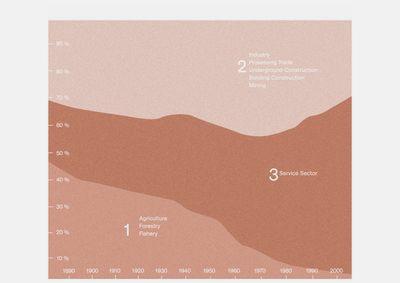
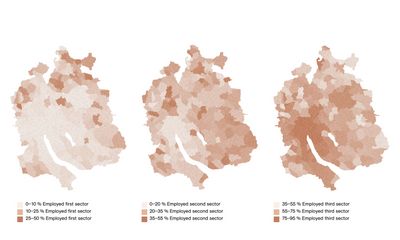
The share of the primary sector (raw material extraction) has decreased sharply, to today’s 5 %. The secondary sector (processing of raw materials) has undergone the smallest fluctuations during this period, with the share also increasing strongly during the industrialization and now decreasing again to the 20 %. The tertiary sector (services) has the highest share today, at 75 %, and has therefore increased greatly over the years. Some are currently already talking about a fourth sector, information.
The primary sector has a higher share of workers in rural areas than in urban areas and the tertiary sector vice versa and in metropolitan areas. The second sector is more evenly distributed, with a tendency towards secondary centres or sub-centres.
Go Bigger Go City


We can observe, the larger the company, the more likely they are to be located in the cities. Micro-enterprises are much more numerous than large enterprises, an observation that applies to most municipalities in the canton. The city of Zurich has by far the most; the further you get from Zurich, the fewer companies you find. Although there are proportionally more micro enterprises, 40 % of employees are still employed by large enterprises. Micro, small and medium-sized enterprises share the remaining 60 % of employees equally.
The Richest of the Richest

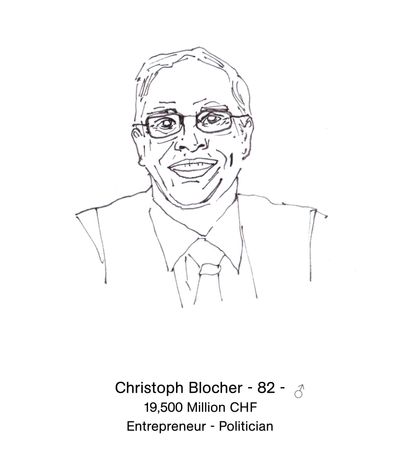

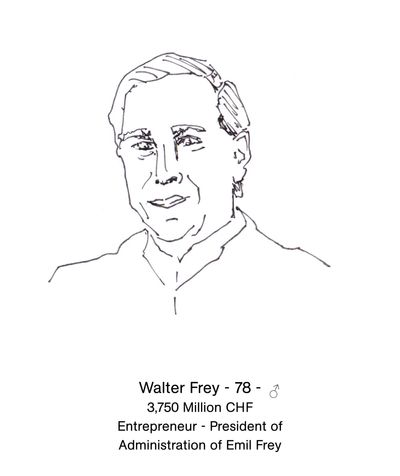






Where there is work, there is (often) money. The municipalities with the highest taxable assets are not the cities! They are those on the lake shore and in the nearer agglomeration. Also, the eight most wealthy taxpayers, all male and over fifty, live on the so-called “Gold Coast”.
Not only are there big differences in the labour supply, but also in the taxable income of individuals, the ratios are remarkable. Ernst Tanner, the ex-CEO of Lindt & Sprüngli, earned 7.7 million, which is as much as 162 Lind & Sprüngli machine operators earn today. Is that still rationale?
Who Pays Whom?

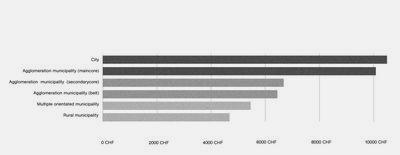
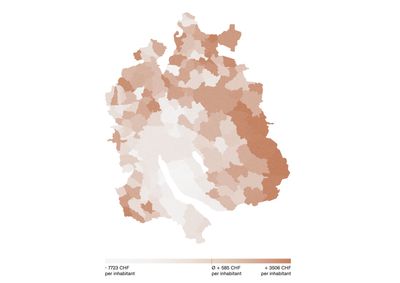
Individuals who live in the agglomeration core municipalities contribute the most for the direct federal tax. However, if one adds the income of companies (legal persons), the city of Zurich just overtakes.
The figure for the financial equalization of Zurich’s municipalities shows the clear financial dependencies. Neither the city finances the country, nor vice versa, but the lakeshore and some other agglomeration municipalities do finance both. While many municipalities are not in need of much allowance, rural areas in particular rely heavily on fiscal equalisation.